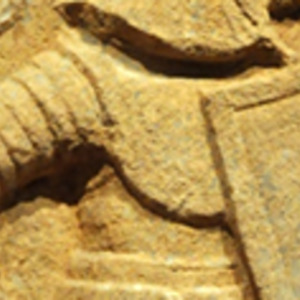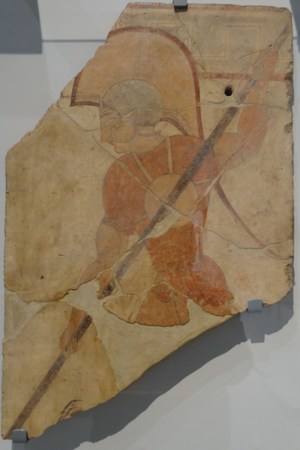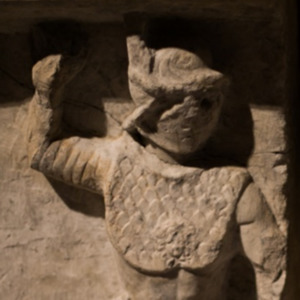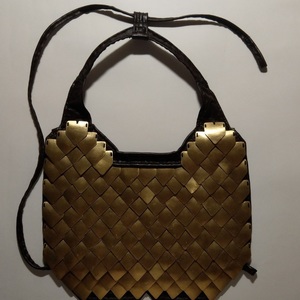Cardiophylax
Cardiophylax (Latin: Cardiophylax or Kardiophylakès) is an ancient cuirass primarily designed to protect the area around the heart, from which it derives its name. Typically, the cardiophylax consists of one or two metal pieces: one protecting the torso and another the back. The pieces were fastened together with leather straps.
This type of body protection was mainly used by the inhabitants of the Italian peninsula, where it appeared as early as the 7th century BCE. A similar cuirass existed in the Near East, consisting of two round breastplates, indicating its use among the Urartian forces from the 9th century BCE.
Subsequently, the cardiophylax evolved into the more elaborate breastplates, increasing in size and featuring relief designs resembling stylized human torsos.
Later on, the cardiophylax fell out of use among the Italian peoples, giving way to more effective armor such as lorica musculata (which can be seen as a development of the cardiophylax), lorica hamata, and lorica squamata. It remained in use only among gladiators, particularly provocator, for whom it became a mandatory part of their equipment. It is worth noting that there were two variations of the cardiophylax: the solid plate and the scale armor.
 Provocator's fragment in a lamellar cardiophylaxis on a bas-relief. Milas Museum, Turkey, 1-2 century CE
Provocator's fragment in a lamellar cardiophylaxis on a bas-relief. Milas Museum, Turkey, 1-2 century CERelated topics
Gladiator, Provocator, Lorica Musculata, Lorica Segmentata, Lorica Squamata, Lorica Hamata
Literature
- Katrien Maes, Maria Luisa Nava, Stele Daunie. I., L'antiquité classique, Tome 53, p. 547-549, 1984.
- Frank Van Wonterghem, Raffaella Papi, Dischi-corazza abruzzesi a decorazione geometrica nei musei italiani., Compte rendu, L'antiquité classique, Tome 62, p. 554-555, 1993.
- Bloch Raymond. Matériel villanovien et étrusque archaïque du Musée du Louvre. In: Monuments et mémoires de la Fondation Eugène Piot, tome 59, 1974. p. 45-70.
- F. De Backer, Un plastron d'époque assyrienne, Res Antiquae, no 9, p. 221-230, 2012.





